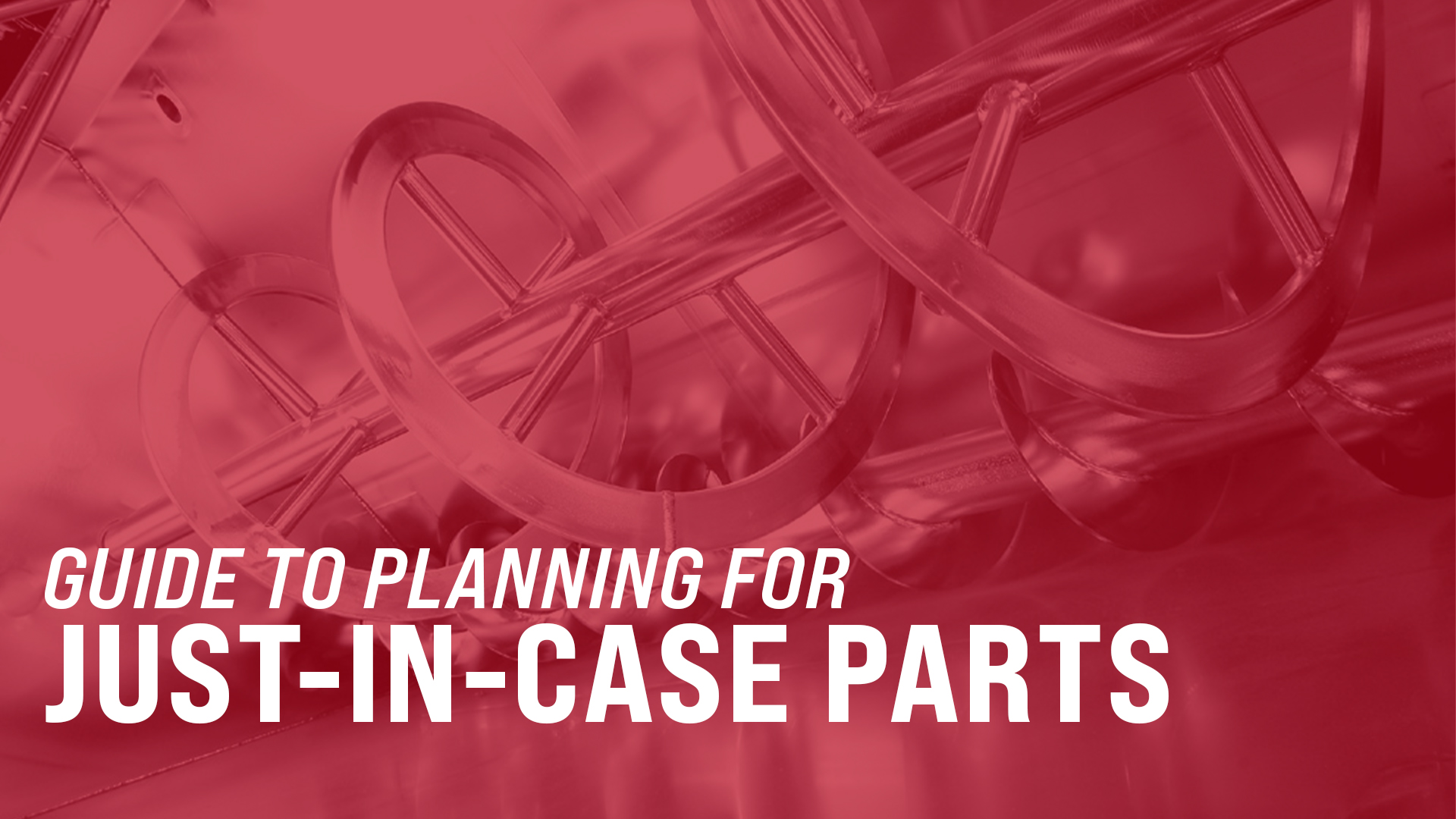
Even with digitized maintenance programs, taking an inventory of the food processing equipment in your plant is essential.
To start, the inventory list will give you a clear understanding of the possible maintenance and parts needs throughout all processing equipment and provide scale and efficiency opportunities in your maintenance program. It is not uncommon for stainless processing equipment to still be in production for over 20 years, so assessing age-related wear and usage wear is important.
Next, prioritize the equipment based on risk. In the event of a breakdown, which machines will likely cause significant production losses? In Mepaco’s product line, cookers, blenders, and mixers are often the critical part of the processing line that causes the highest losses during downtime repair.
Cross-reference long lead times parts and components against your critical processing equipment. Agitators, motors, and cylinders have the longest lead times for parts replacement on Mepaco’s Mixers (“How to Plan for Mixer Blender Parts”), Blenders and Cookers.
- Delivery of agitator replacements is 3 – 6 months due to the availability of stainless material, and they are custom fabricated for the application. Make sure you have a spare to avoid unnecessary downtime.
- Motor and gearbox availability is dependent on the manufacturer. Some motors and motor components are manufactured overseas, so it is recommended to have a spare in the event of an emergency.
- Cylinders are also manufactured overseas and may require long replacement lead times. Plan spares accordingly.
Review preventative maintenance recommendations. In addition to long lead items for Mepaco’s cooking and blending equipment, recommended replacement parts include gaskets, safety switches, seals, bearings, and scraper assemblies. Preventative maintenance protocols will include checks of seals, and gaskets, lubrication schedules, and checking for worn scrapers on cookers. Mepaco recommends a complete spare set of scraper assemblies (“7 Upgrades that Increase Cooker Production”) to prevent cooker downtime associated with worn scrapers. Note the hours of operation to manage scraper replacements.
Schedule an efficiency audit or training – or both. High-volume automation brings a high degree of risk for machinery fatigue and puts pressure on maintenance programs to cover fast repairs and replacements. A service audit of crucial processing equipment with a training overview of equipment can provide best practice maintenance and troubleshooting tips and
teach operators to understand every facet of the equipment, including the symptoms when it isn’t running properly.
Contact Josh Schladweiler, Field Services and Parts Manager, for more information at (920) 344-1465.
